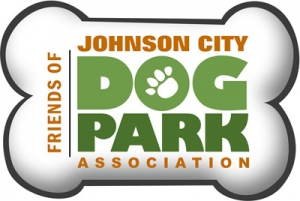Safety Tips
Inside the Park
Know your dog style of play
Some dogs like a very rough-and-tumble style of play, with lots of growling, grabbing, tackling, and wrestling. Some dogs have a daintier style, with bowing and chasing but not much physical contact. Some dogs like to herd other dogs and may bark or nip at the other dogs.
The important thing is to know what is normal for your dog, and what the warning signs are that your dog may be getting over-stimulated and may be in danger of crossing the line into aggression. It’s also important to be sensitive to the other dogs with whom your dog is playing. You should always watch your dog closely and be prepared to intervene if the interaction seems to be getting out of hand or becoming too uncomfortable for a particular dog.
If your dog seems to be “pestering” another dog who seems to be growing stressed or annoyed, intervene and direct your dog’s attention elsewhere.
Understand canine communication
Dogs that enjoy rough play may growl and snap as part of that play. For example, dogs may also snarl and/or snap to “set their limits” with other dogs, to let another dog know that it is being too rough or too pushy.
Mounting (“humping”) is often a way by which one dog expresses dominance over another. Do not allow your dog to mount another dog, as this behavior is very likely to lead to a fight. Even if your dog means no harm, the other dog is very likely to take offense.
Respond promptly to aggressive behavior. Deciding what constitutes aggressive behavior is sometimes a matter of judgment. It’s important to know your dog and to know what is normal and safe for your dog.
Dogs displaying significant aggression toward other dogs, or any aggression toward humans, must IMMEDIATELY be leashed and removed from the park for the day. This is not only for the safety of other park users-it can also help with the dog’s own education. A dog soon realizes that aggressive behavior earns it a one-way ticket out of the park-and many dogs quickly learn to mind their manners.
You may find that your dog gets along better with certain dogs, or with certain types of dogs than with others, and you may want to avoid entering the park when there are dogs with whom your dog has a problem.
A dog that repeatedly displays aggressive behavior with a variety of dogs is not a good dog park candidate and should stop coming to the park.
It is strongly recommended that dogs be spayed or neutered before coming to the dog park. Un-neutered males in particular are much more likely to get into fights with other male dogs.
PREVENTING A DOG FIGHT
The best way to deal with a fight is to not allow it to happen in the first place. Know your dog, understand canine communication, monitor situations carefully, and be prepared to intervene before stress, over-stimulation, or aggression, escalate into a full-fledged fight.
If, despite your efforts, a fight does break out, here are some guidelines to follow:
Both owners MUST get control of their dogs immediately. If one owner gets control of his or her dog but the other owner does not, this creates a very dangerous situation for the first dog and owner.
Grab the dogs from the BACK-grab either the tail or the hind legs. If a dog is involved in a fight, you should not grab the collar or put your hands anywhere near the dog’s head. A dog that is fighting is in a state of frenzy and is not aware of what it is doing. It may reflexively lash out and bite at anything that comes near its head. The safest approach is to grab the dog’s tail. If the dog has no tail, grab the hind legs. Both owners should grab their dogs and pull them away from each other at the same time. Then each dog should be leashed and IMMEDIATELY removed from the park.
Other owners should get hold of their own dogs. The sight of a fight breaking out sometimes incites other dogs to get involved.
Do NOT stick your hands into a fight between other people’s dogs. If you reach into the middle of a dog fight, you are likely to get bitten. You may mean to be helpful, but if you get bitten by someone else’s dog, that dog may end up in trouble with the legal authorities. Let the owners control their own dogs.
Entering the Dog Park
•Keep dogs on leash until they are inside the first gate
•Make sure the first gate is closed BEFORE entering the second gate
•Remove metal collars
•Unleash your dog as quickly as possible after entering the first gate
•DO NOT enter the dog park with your dog leashed
•DO NOT leash your dog inside the park


